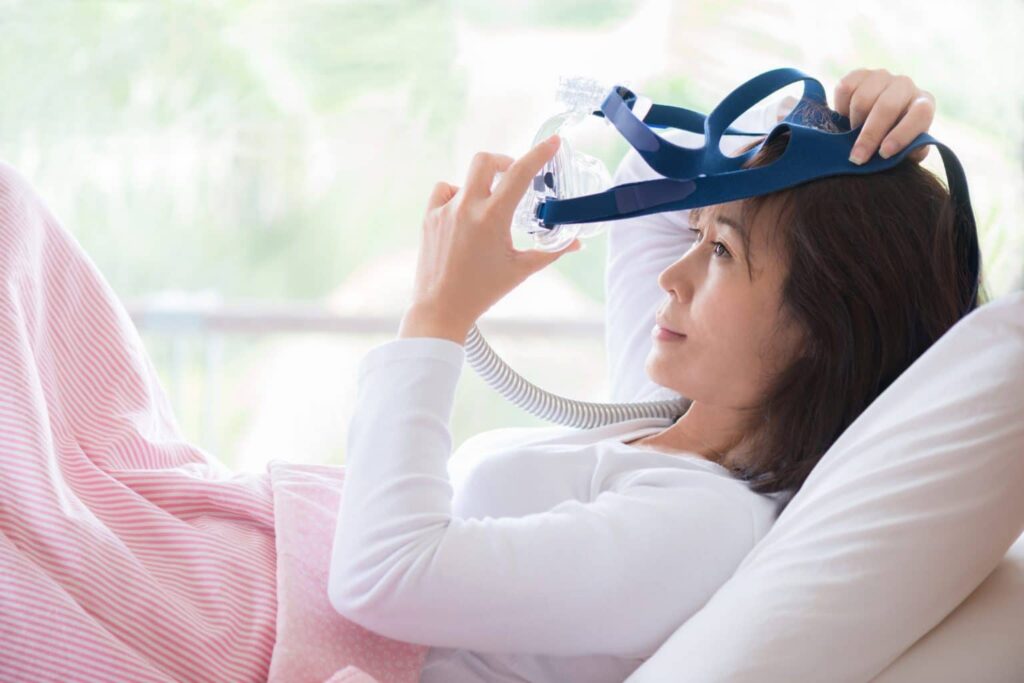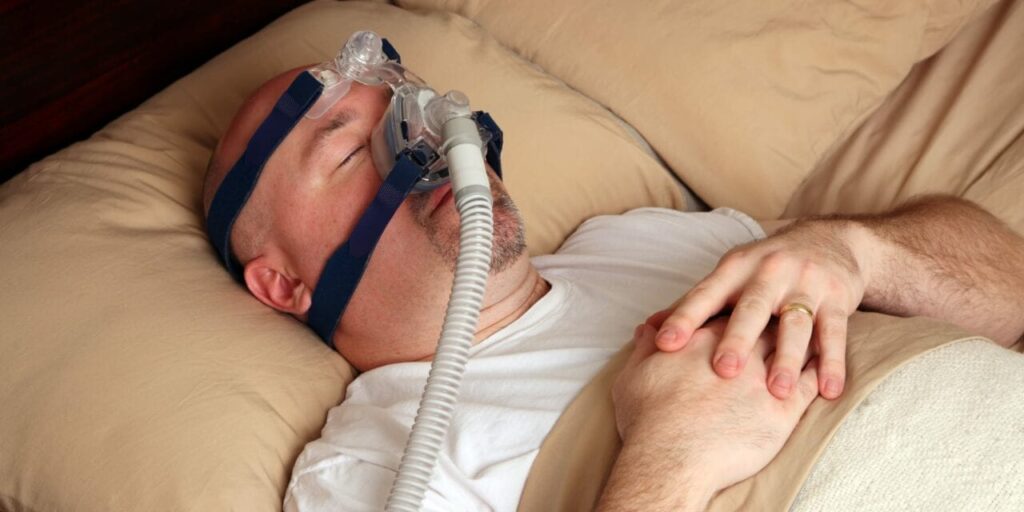While using a CPAP machine may make it difficult for you to go asleep at first, there are a number of tricks and suggestions you may attempt to make it easier for you to fall asleep and become adjusted to your CPAP machine.
1. Perfect Practice Makes Perfect
Getting acclimated to wearing your cpap machine and the difference air pressure you will feel while wearing your mask will help you fall asleep more easily, even though most sleep apnea only happens during sleep (as the name fairly strongly indicates). When you’re resting, watching TV, or otherwise inactive, try wearing your mask for brief durations of time. This can help you get acclimated to the sensation of using the device and will reveal any changes you may need to make for maximum comfort. Not only will it be difficult for you to fall asleep if you attempt to accomplish all of this while attempting to do so, but you could also train your body to reject falling asleep when wearing a mask.
You may change the tightness of your mask, the amount of humidity in the air (if our machine has a humidifier), and other settings to enhance the experience even if your CPAP machine expert will have already adjusted the pressure on the device.
2. Set up your sleeping area
Your ability to fall asleep is significantly influenced by your sleeping environment. Having a comfortable sleeping environment in your bedroom and on your bed is crucial for having a good night’s rest.
Your bedroom ought to be quiet, dark, and comfortably warm all through the night. If your room isn’t dark, getting some block-out curtains or a good eye mask (as long as wearing one doesn’t make you feel claustrophobic) will help. Similar to this, good earplugs may be helpful if your bedroom isn’t quiet or you have trouble getting acclimated to the sound of your CPAP machine.
Related: How to manage sleep apnea naturally
Keeping your room cold is more difficult, but using fans, heaters, and similar devices may help you keep the temperature where you feel comfortable.
When it comes to both the quality of your sleep and the ease with which you can fall asleep, your bed and pillows are crucial. It’s critical to have a comfortable and supportive mattress, as well as a pillow that supports your head and neck. There are pillows available that are particularly made to accommodate CPAP machines with ease if you want to sleep on your side.
With an adjustable base bed, you may raise your head to an inclined position if you prefer to sleep on your back. By relieving some of the strain on your airways as you sleep, sleeping on an incline may alleviate moderate sleep apnea symptoms and may even enable you to use a lower CPAP pressure.

3. Establish a Sleeping Program
A person may develop a variety of behaviors to increase the amount and quality of their sleep. While many of us adhere to strict daily schedules, such as rising at the same time each day and going to bed at the same time, this isn’t always the ideal method. The best method to establish a regular sleep pattern is to wake up at the same time every day but going to bed when you are exhausted is much preferable than merely going to bed at the same time every day.
We’ve all gone to bed when we weren’t weary and sat there for what seemed like an eternity staring at the ceiling until we eventually slept off more out of boredom than from exhaustion.
Going to bed when you’re not exhausted or engaging in activities other than sleeping or having sex in bed, such as reading or watching TV, might subtly train you to link your bed with activities rather than sleep, thus making it more difficult to fall asleep.
If you wear a CPAP machine and go to bed when you’re not exhausted, particularly if you are new to CPAP machine treatment, you can find yourself fixating on the mask, the air pressure, and the machine’s sound, which makes it more difficult to fall asleep.
As a general guideline, it’s preferable to go to another room and engage in something calming, like reading a book, until you feel weary again before returning to bed if you can’t fall asleep in around 20 minutes after going to bed.

4. Modify Your Sleep Position
Making an adjustment to your sleeping posture may help you fall asleep more quickly since the position in which you sleep may influence how severe your sleep apnea symptoms are. If you are a frequent back sleeper, adjusting your position may enable your CPAP machine expert to reduce the pressure of your machine, making it simpler and more pleasant to use. Back sleepers often have more severe sleep apnea symptoms than side or stomach sleepers.
It may be necessary to use some mechanical assistance, such as a “bumper belt,” to push you to adopt the new sleeping position since changing your sleeping posture isn’t always simple. These belts include compartments for inflated bumpers that prevent you from rolling over onto your back. They may be worn across the chest or waist. You can create a similar appearance without spending money on a belt by sewing a tennis ball into the back of a sleep shirt or set of pajamas.
An adjustable base bed may help you lift your head and sleep on an inclined surface whether you like to sleep on your back or have a medical condition that makes it difficult for you to do so comfortably. This will assist to alleviate strain on your airways.
5. Relax before bed
It’s crucial to slow down both your activities and your eating in the hours before night. Avoiding eating one to two hours before to bed should help you strike a balance between avoiding going to bed on a full stomach and avoiding attempting to sleep on an empty stomach.
Try to engage in relaxing activities for a few hours before bedtime, such as reading a book, watching TV, taking a warm bath, practicing meditation, or the like. Stressful or overly stimulating activities can promote the release of cortisol, a hormone that promotes alertness, making it harder to fall asleep.
